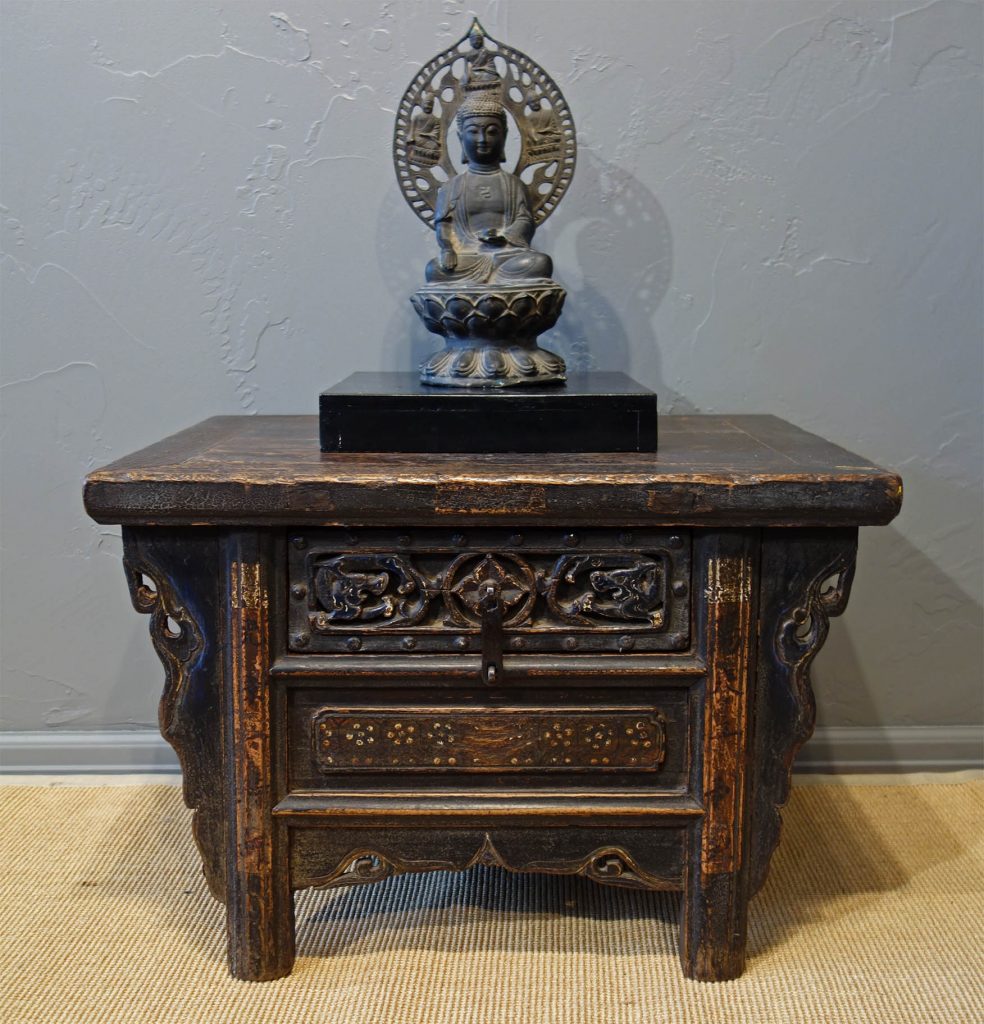
16th C, Elm, Shanxi. Important as table for holding Buddha figure in ancestral worship; rare as coffers disappeared after Ming period.
This kind of small table was often used to hold the statue of a Buddha in ancestral worship; thus, it is called a “Buddha Table”. It could also be used for serving food and drinks since houses were small and much of the furniture had to be used for multiple purposes. A kang table was usually placed on top of a ‘kang’ bed, a hollow brick platform built into a room and heated by a fire piped in from the kitchen next door providing heat in the cold northern country.
This kang table has the characteristics of a bigger coffer, which is a chest built with a hidden space below a drawer to hide valuable personal belongings. It is constructed in the traditional mitered, mortise-and-tenon method. The top has a central floating panel formed by several planks. It is strengthened below by transverse braces. Below this top is a drawer heavily decorated with a recessed panel showing in the middle a beaded “taohuan” panel displaying a pair of scrolling confronting dragons facing a deep-carved rosette. This rosette is fitted with an original tongue-fastener which can latch and secure the drawer to a locking loop in the “sword-ridge” stretcher below. Decorating around the dragons-panel is a row of big iron boss-head nails. Below the drawer is another recessed panel with a beaded taohuan panel in the middle decorated with a row of flower petals done with hand-hammered brass-head nails. The metal nails decoration was done mainly to make this small chest more prestigious as metal was an expensive commodity at the time, afforded only by the rich. A concealed storage space is below the drawer and behind the lower recessed panel, making this small table a coffer. The legs of this table are tenoned to the tabletop.
This frontally oriented piece is decorated with long scrolled spandrels and aprons. The vertically molded front legs are interesting in that some Chinese writing seems to have been inscribed there, probable wishing the person gifted with this table long life, happiness and prosperity. The writing is faded and hard to read. As coffers were frequently presented as part of a dowry, this elaborately constructed little table might be given as a wedding gift to a member of high society. The table is valuable as coffers largely disappeared after the Ming Dynasty when the merchant class emerged, along with banks. It survived in excellent condition. As a testament to the fantastic craftsmanship of that era, this little coffer is rare and valuable.